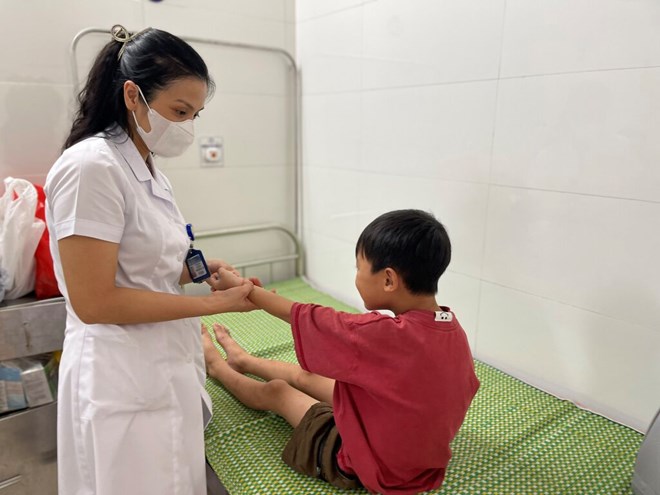
Through medical history taking over the past month, the patient has had symptoms of poor appetite, irregular digestive disorders, and weight loss. Testing revealed specific Hemynolepis spp tapeworm eggs in the stool sample.
According to MSc. Dr. Van Thi Tho, Head of the Department of Diagnostic Imaging and Functional Testing, Dang Van Ngu Hospital, Central Institute of Malaria - Parasitology - Entomology, Hymenolepiasis (also known as dwarf tapeworm/rat tapeworm) is a small tapeworm disease. Patients get the disease by swallowing small tapeworm eggs in pre-cooked cereals, foods, drinks or hands contaminated with tapeworm eggs or immature larvae in rodents (rats), arthropods such as cockroaches or bran weevils in cereals... or people with this disease who have not been treated are also the source of the disease.
The treatment time when hospitalized is about 3-7 days. After discharge, there will be a follow-up appointment after 1 and 3 months and specific tests of the disease to evaluate the recovery and physical stability of the patient, from which the doctor will have specific instructions for each case during the outpatient period.
According to Dr. Van Thi Tho, Hymenolepiasis has existed for a long time and is caused by two species of tapeworms: Hymenolepis nana (dwarf tapeworm) and Hymenolepis diminuta (rat tapeworm). Anyone can be infected and get sick.
In Vietnam, many cases of children infected with tapeworms have been discovered. Because the disease progresses silently, it is often overlooked. Every year, there are a few cases of patients who, when they come to Dang Van Ngu Hospital for a health check-up for parasitic diseases, accidentally discover small tapeworm eggs in their stool and are all cured.
The disease occurs worldwide (about 20 million people have it) but is more common in temperate countries, most often in people living in areas with poor sanitation and those living in crowded environments. The disease is common in children under 15 years old.
When infected with the source of infection, the disease often progresses silently. However, in cases where a large number of worms are infected, the patient has symptoms such as fatigue, loss of appetite, weight loss, headache, itching in the lower body...
When people swallow tapeworm eggs, or eat food such as rice bran infected with small tapeworms, the pathogen will enter the stomach, localize and cause disease in the villi of the small intestine, ileum, breaking the intestinal villi causing gastrointestinal symptoms such as epigastric pain, pain around the navel... loss of appetite, fatigue.
Source: https://laodong.vn/suc-khoe/di-kiem-tra-suc-khoe-phat-hien-mac-san-day-nho-hiem-gap-1355883.ldo






























































































Comment (0)